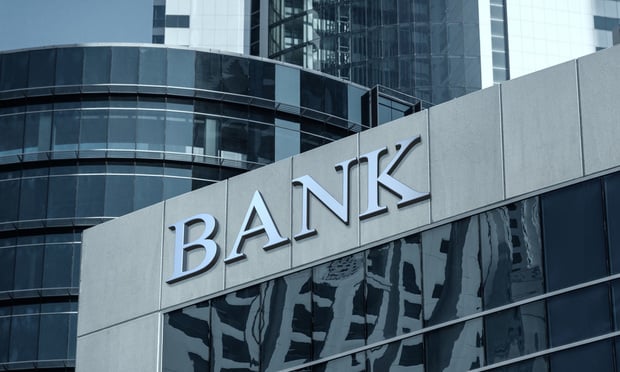WASHINGTON, DC—Does anyone remember the hit movie Groundhog Day? The lead character, played by Bill Murray, was forced to live the same day over and over again. In the end he almost lost his sanity waiting for something new.
And so we turn to the minutes from the July meeting of the Federal Reserve's Open Market Committee. Like so many prior meetings, members agreed that interest rates must be raised. And like so many prior meetings, members were divided over when this should happen. The Fed wrote in its summary of the meeting:
The committee expects that economic conditions will evolve in a manner that will warrant only gradual increases in the federal funds rate; the federal funds rate is likely to remain, for some time, below levels that are expected to prevail in the longer run. However, the actual path of the federal funds rate will depend on the economic outlook as informed by incoming data.
As the minutes suggest, the doves and hawks on the committee have not come closer to an agreement and Chairperson Janet Yellen is more inclined to side with the doves.
The more bullish members are betting that the US economy, now close to full employment, can support a rate increase, while the doves worry that the economy is more fragile than the job numbers suggest and/or that inflation is not close to hitting its 2% target.
There is some support to this later notion. Last month the Bureau of Economic Analysis reported that real gross domestic product increased at an annual rate of 1.2% in the second quarter of 2016. Q1 GDP was revised downward to 0.8%. There is even doubt to be found among the recent job gains.
Despite their strength, financial markets are pricing in just a 26% chance of a move by the Fed at its next meeting in September, Savills Studley Chief Economist Heidi Learner noted after they were released earlier this month.
It is understandable—the Fed has cried wolf on this issue one too many times. But then again, it is going to raise rates at some point—and when it does, it must know the market will go into something of a shock. Indeed, it hinted at this in its latest minutes:
Federal Reserve communications released in conjunction with the June FOMC meeting were interpreted by market participants as more accommodative than expected. The expected path of the federal funds rate implied by market quotes declined in response to the release of forecasts collected for the June Summary of Economic Projections, which showed larger-than-expected downward revisions to projections of the federal funds rate.
So yes, while a rate increase could happen as soon as the next meeting, scheduled for Sept. 20-21, 2016, Fed officials will first want to see a few more economic reports before a final decision is made. As they have said at the conclusion of other meetings.
WASHINGTON, DC—Does anyone remember the hit movie Groundhog Day? The lead character, played by Bill Murray, was forced to live the same day over and over again. In the end he almost lost his sanity waiting for something new.
And so we turn to the minutes from the July meeting of the Federal Reserve's Open Market Committee. Like so many prior meetings, members agreed that interest rates must be raised. And like so many prior meetings, members were divided over when this should happen. The Fed wrote in its summary of the meeting:
The committee expects that economic conditions will evolve in a manner that will warrant only gradual increases in the federal funds rate; the federal funds rate is likely to remain, for some time, below levels that are expected to prevail in the longer run. However, the actual path of the federal funds rate will depend on the economic outlook as informed by incoming data.
As the minutes suggest, the doves and hawks on the committee have not come closer to an agreement and Chairperson Janet Yellen is more inclined to side with the doves.
The more bullish members are betting that the US economy, now close to full employment, can support a rate increase, while the doves worry that the economy is more fragile than the job numbers suggest and/or that inflation is not close to hitting its 2% target.
There is some support to this later notion. Last month the Bureau of Economic Analysis reported that real gross domestic product increased at an annual rate of 1.2% in the second quarter of 2016. Q1 GDP was revised downward to 0.8%. There is even doubt to be found among the recent job gains.
Despite their strength, financial markets are pricing in just a 26% chance of a move by the Fed at its next meeting in September, Savills Studley Chief Economist Heidi Learner noted after they were released earlier this month.
It is understandable—the Fed has cried wolf on this issue one too many times. But then again, it is going to raise rates at some point—and when it does, it must know the market will go into something of a shock. Indeed, it hinted at this in its latest minutes:
Federal Reserve communications released in conjunction with the June FOMC meeting were interpreted by market participants as more accommodative than expected. The expected path of the federal funds rate implied by market quotes declined in response to the release of forecasts collected for the June Summary of Economic Projections, which showed larger-than-expected downward revisions to projections of the federal funds rate.
So yes, while a rate increase could happen as soon as the next meeting, scheduled for Sept. 20-21, 2016, Fed officials will first want to see a few more economic reports before a final decision is made. As they have said at the conclusion of other meetings.
Want to continue reading?
Become a Free ALM Digital Reader.
Once you are an ALM Digital Member, you’ll receive:
- Breaking commercial real estate news and analysis, on-site and via our newsletters and custom alerts
- Educational webcasts, white papers, and ebooks from industry thought leaders
- Critical coverage of the property casualty insurance and financial advisory markets on our other ALM sites, PropertyCasualty360 and ThinkAdvisor
Already have an account? Sign In Now
*May exclude premium content© 2024 ALM Global, LLC, All Rights Reserved. Request academic re-use from www.copyright.com. All other uses, submit a request to [email protected]. For more information visit Asset & Logo Licensing.









